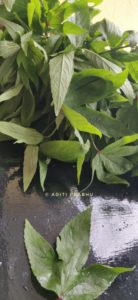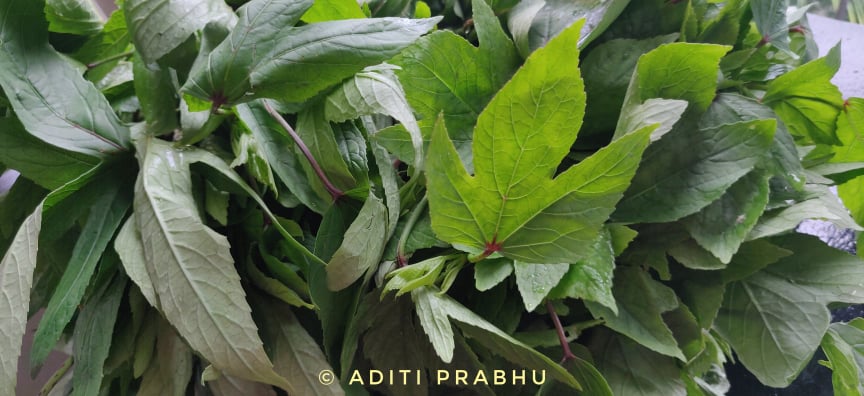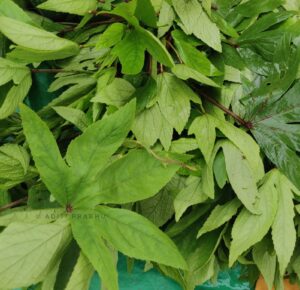Ambadi or Gongura is one of the popular local greens in certain cuisines. I first learned about it from a local vendor who asked me to taste these deliciously intriguing sour greens but I learned more about the usage of gongura from my Bengali friends. Gongura is widely used in the Northeast and Andhra Cuisine.
Scientific name of Gongura
Hibiscus Sabdariffa.
Other names
Ambadi ( Marathi)
Ambada, Pitwaa ( Hindi)
kenaf (English)
Poi saag, Gongura (Bengali)
Pulichchaikerai (Tamil)
Chin baung ( Chinese)
Rosella or Roselle.
Availability
It is cultivated in warm countries like India, Indonesia, Philippines, Malaysia, Tropical Africa, Florida, etc. In India, it is mainly popular in Maharashtra, Andhra Pradesh, Karnataka, Odissa, Bengal, Tripura, Mizoram, etc.
It is mainly available in summer and early monsoons but make sure to buy them fresh when the leaves are firm and not wilted or shriveled.
Appearance
Ambadi or Gongura come in 2 varieties- green-stemmed and red-stemmed variety but out of the 2, the one with the red stem is sourer and tart.
The leaves are small to medium in size and have around 4-5 lobes and they appear somewhat like a mini version of autumn leaves.
Taste
The smaller leaves are mild and tangy while the larger ones are more robust.
It’s this sour taste and tart flavour of ambadi that makes it unique and interesting at the same time.

Nutrition Facts
Ambadi leaves are low-calorie and high-fiber. They are also rich in vitamins A, B1, B2, B6, and C and are a good source of folate, iron, zinc, calcium, potassium, magnesium, fibre, and antioxidants too.
Health Benefits
These sour leaves have multiple health benefits some of which are listed below:
- Prevents Urinary Tract Infections
- Improves skin and hair
- Acts as a diuretic
- Anti-hypersensitive, Anti-atherosclerotic
- High anti-oxidant
- Prevent Anaemia
- Anti Cancer
- Antibacterial, antifungal, anti-inflammatory
How to Clean?
Ambadi leaves are rather easy to clean.
Separate the stem from the leaves then remove spoilt leaves, if any. Wash them properly before use.
How to store?
Store unwashed leaves but pat dry the leaves with a cloth and keep them in the fridge. It stays for around 5-7 days easily but it’s best consumed as soon as possible. Don’t forget to wash the leaves before use.
Culinary use
They can be steamed, pickled, blanched, cooked, ground to paste, or even dried in both vegetarian and non-vegetarian dishes.
Some culinary uses of these sour leaves are as follows-
- Chutney
- Pickles
- Soups
- Tempering
- Gongura Tea
- Gongura Pappu
- Meat dishes
Have you tried Gongura yet? What do you call it in your language and how do you use it? Share your experience in the comments below and let us learn together meanwhile make sure to read about-kanagi, or navdhari bhindi.
References


the ambadi leafs can be dried in the sun and coarsely crushed which can be used as added flavour. we the Garo Tribals from Garohills, Meghalaya, North East India add it to Pura [soaked powdered rice ( traditional way of pounding better than using machine to create powder)] with meat and other veggies with oil or using bicarbonate of soda or traditional alkaline water made from ashes of bamboo leaf sheath, cotton stalk or bamboo stalk.
Thats absolutely amazing. Thank you for sharing this information with me.
Nice article!
Thanks for sharing. Keep inspiring us.
NICE POST!
THANK YOU FOR SHARING…